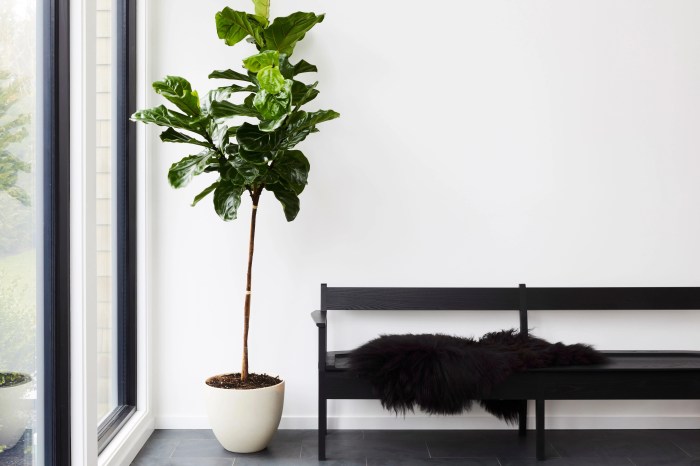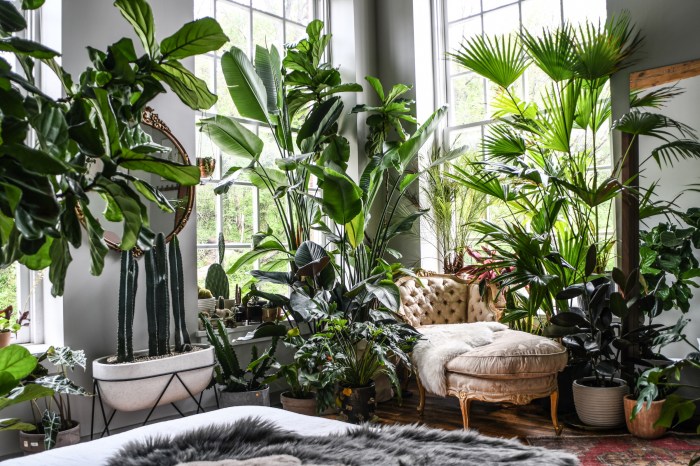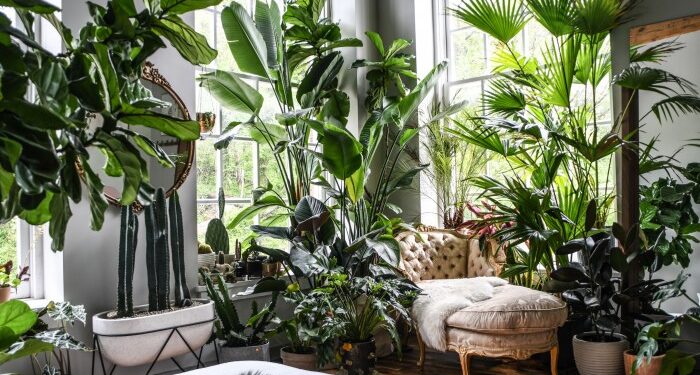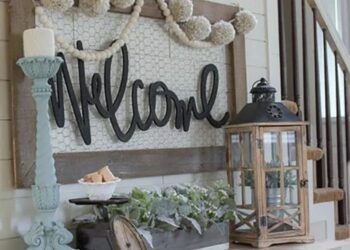Best Indoor Plants for Beautiful Interior Design sets the stage for this enthralling narrative, offering readers a glimpse into a story that is rich in detail with casual formal language style and brimming with originality from the outset.
Indoor plants have long been cherished for their ability to breathe life into interior spaces, adding a touch of nature's beauty to our surroundings. In this guide, we will explore the art of incorporating indoor plants into interior design, showcasing their myriad benefits and creative possibilities.
Benefits of Indoor Plants for Interior Design
Indoor plants are not only visually appealing but also offer numerous benefits for interior design, air quality, and overall well-being.
Enhancing Aesthetics
Indoor plants have the power to transform any space into a vibrant and inviting environment. Their lush green leaves and colorful blooms can add a touch of nature to indoor spaces, creating a refreshing and lively atmosphere.
Air Quality and Well-being
Indoor plants are natural air purifiers, absorbing harmful toxins and releasing oxygen into the air. This can improve indoor air quality, reducing the risk of respiratory issues and allergies. In addition, the presence of plants has been shown to boost mood, reduce stress, and increase productivity, promoting overall well-being.
Tranquility and Relaxation
The presence of indoor plants can create a sense of tranquility and relaxation in a room. Their natural beauty and calming effects can help to reduce anxiety and promote a peaceful ambiance, making them perfect additions to spaces where people want to unwind and rejuvenate.
Types of Indoor Plants Ideal for Interior Design

Indoor plants not only enhance the aesthetic appeal of a space but also contribute to a healthier indoor environment. Choosing the right plants can make a significant difference in the overall design and atmosphere of a room. Here are some popular indoor plants that thrive in different light conditions, are low-maintenance, and can complement various design styles:
Popular Indoor Plants for Different Light Conditions:
- Succulents:Ideal for bright, sunny spots as they thrive in direct sunlight.
- Spider Plant:Thrives in indirect sunlight and can tolerate low light conditions.
- Pothos:Suitable for low to moderate light and can survive in various lighting conditions.
- Peace Lily:Prefers shaded areas and can thrive in low light environments.
Low-Maintenance Indoor Plants for Beginners:
- Snake Plant:Known for its resilience and ability to thrive with minimal care.
- ZZ Plant:Requires low light and infrequent watering, making it perfect for beginners.
- Aloe Vera:Easy to care for and has air-purifying qualities, suitable for novice plant owners.
- Cast Iron Plant:Can adapt to various light conditions and is drought-tolerant, making it low-maintenance.
Choosing Indoor Plants Based on Design Style:
- Modern Design:Opt for sleek, minimalist plants like snake plants or rubber plants to complement the clean lines and simplicity of modern interiors.
- Bohemian Style:Incorporate lush, trailing plants like pothos or spider plants to add a touch of nature and whimsy to bohemian-inspired spaces.
- Scandinavian Design:Choose plants with soft, round leaves such as peace lilies or ferns to enhance the cozy and natural elements of Scandinavian interiors.
- Industrial Decor:Select hardy plants like succulents or cacti to add a touch of greenery to industrial-style spaces with exposed brick and metal accents.
Placement and Arrangement Tips for Indoor Plants
Indoor plants can truly enhance the aesthetic appeal of a room, but proper placement and arrangement are key to maximizing their impact.
Optimal Placement for Indoor Plants
- Place plants near windows to ensure they receive adequate sunlight for photosynthesis.
- Avoid placing plants near air vents or radiators, as the heat or drafts can damage them.
- Consider the humidity levels in your home and choose plants that thrive in your specific environment.
Grouping and Arranging Indoor Plants
- Create visual interest by grouping plants of varying heights, textures, and colors together.
- Use plant stands or shelves to create layers and add dimension to your plant display.
- Consider the overall aesthetic of the room and place plants strategically to complement the existing decor.
Using Indoor Plants as Focal Points or Accents
- Choose a statement plant, such as a large fiddle leaf fig or a colorful orchid, to serve as a focal point in a room.
- Use smaller plants as accents on side tables, shelves, or mantels to add a touch of greenery to different areas of the room.
- Experiment with different pots and planters to add visual interest and tie the plants into the overall design scheme.
DIY Plant Decor Projects for Interior Design

Adding indoor plants to your home decor can bring a touch of nature and freshness to your space. Here are some creative DIY plant decor projects to elevate your interior design:
Plant Potting and Display Ideas
Creating unique plant pots can add a personalized touch to your indoor plant display. Consider painting old tin cans or mason jars to use as planters, or repurpose old teacups or glass containers for a whimsical look.
Green Wall or Vertical Garden
A green wall or vertical garden is a great way to maximize space and bring a lush, vibrant feel to your home. To create your own green wall, you can use a variety of hanging planters or wall-mounted shelves to display your indoor plants vertically.
Consider using a mix of trailing and upright plants for a dynamic look.
Final Thoughts
As we conclude our exploration of the best indoor plants for beautiful interior design, it becomes evident that these green companions are more than just decorations—they are living elements that can transform any space into a sanctuary of tranquility and style.
Whether you're a seasoned plant enthusiast or a novice looking to embark on a greenery-filled journey, the world of indoor plants offers endless opportunities for creativity and rejuvenation.
FAQ Explained
Which indoor plants are best for low-light conditions?
Some great options for low-light indoor spaces include snake plants, pothos, and peace lilies.
How can indoor plants improve air quality in a room?
Indoor plants help purify the air by absorbing toxins and releasing oxygen during photosynthesis.
What are some creative ways to display indoor plants in home decor?
You can showcase indoor plants in hanging planters, terrariums, or even create a lush green gallery wall.
Do indoor plants require special care based on the design style of a room?
Yes, certain plants may thrive better in specific design styles, so it's essential to choose plants that complement the aesthetic of your space.













